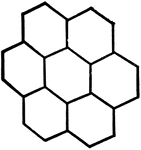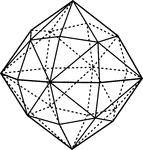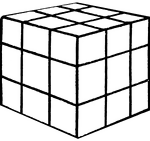
Froebel's Divided Cube (Twenty-seven Smaller Cubes)
This image shows one of Friedrich Froebel's divided cube (this one divided into twenty-seven smaller…
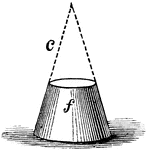
Frustum of a Cone
"The part of any solid between two planes, which may be either parallel or inclined to each other: as,…
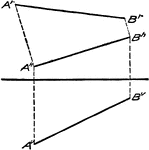
Construction of Geometric Revolution
"The distance of A and B below H is indicated on the V projection. Thus if to A∧h B∧h the perpendiculars…
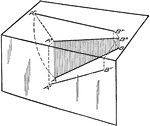
Revolutions into the Plane of Geometric Shapes
"The H projection of the line AB in the space is a line connecting the feet of all the perpendiculars…
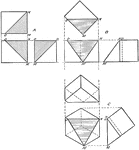
Successive Revolutions of Geometric Shapes
"A block revolved from its first position about an axis perpendicular to H through 45 degrees, then…
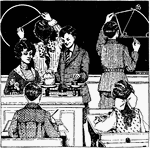
Geometry
Two students drawing geometrical shapes on the chalkboard. A student is also using a scale while students…

Giraffe
Tangrams, invented by the Chinese, are used to develop geometric thinking and spatial sense. Seven figures…

Giraffe
Tangrams, invented by the Chinese, are used to develop geometric thinking and spatial sense. Seven figures…

Giraffe
Tangrams, invented by the Chinese, are used to develop geometric thinking and spatial sense. Seven figures…

Giraffe
Tangrams, invented by the Chinese, are used to develop geometric thinking and spatial sense. Seven figures…

Gnomon
"A piece of a parallelogram left after a similar parallelogram has been removed from a corner of it.…
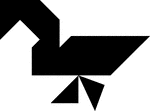
Goose
Tangrams, invented by the Chinese, are used to develop geometric thinking and spatial sense. Seven figures…
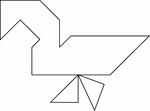
Goose
Tangrams, invented by the Chinese, are used to develop geometric thinking and spatial sense. Seven figures…
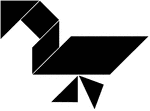
Goose
Tangrams, invented by the Chinese, are used to develop geometric thinking and spatial sense. Seven figures…
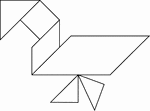
Goose
Tangrams, invented by the Chinese, are used to develop geometric thinking and spatial sense. Seven figures…
Gypsum
"Monoclinic. Crystals usually tabular parallel to clinopinacoid; in diamond-shaped crystals with edges…
Gypsum
"Monoclinic. Crystals usually tabular parallel to clinopinacoid; in diamond-shaped crystals with edges…
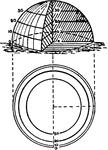
Contours of a half sphere
"The contours of a half sphere are a series of circles, far apart near the center (top) and near together…

Hammer
Tangrams, invented by the Chinese, are used to develop geometric thinking and spatial sense. Seven figures…

Hammer
Tangrams, invented by the Chinese, are used to develop geometric thinking and spatial sense. Seven figures…

Hammer
Tangrams, invented by the Chinese, are used to develop geometric thinking and spatial sense. Seven figures…

Hammer
Tangrams, invented by the Chinese, are used to develop geometric thinking and spatial sense. Seven figures…

Hematite
"Hexagonal-rhombohedral. Crystals usually thick to thin tabular. Basal planes prominent, often showing…
Hematite
"Hexagonal-rhombohedral. Crystals usually thick to thin tabular. Basal planes prominent, often showing…
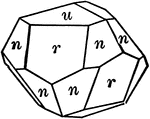
Hematite
"Hexagonal-rhombohedral. Crystals usually thick to thin tabular. Basal planes prominent, often showing…
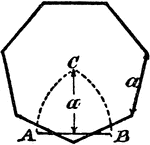
Construction Of A Heptagon
An illustration showing how to construct a heptagon, or septagon. "The appotem a in a hexagon is the…

Hexagon
Tangrams, invented by the Chinese, are used to develop geometric thinking and spatial sense. Seven figures…

Hexagon
Tangrams, invented by the Chinese, are used to develop geometric thinking and spatial sense. Seven figures…
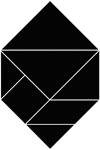
Hexagon
Tangrams, invented by the Chinese, are used to develop geometric thinking and spatial sense. Seven figures…
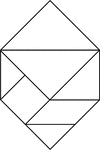
Hexagon
Tangrams, invented by the Chinese, are used to develop geometric thinking and spatial sense. Seven figures…
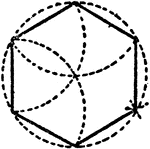
Construction Of A Hexagon In A Circle
An illustration showing how to construct a hexagon in a given circle. "The radius of the circle is equal…
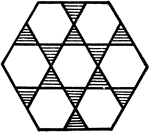
Large Hexagon Design Consisting of 7 Hexagons
Illustration of a large hexagon with an interior design made by 7 hexagons with adjacent sides.
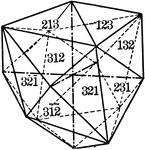
Hexakistetrahedron
"The faces of the hexakistetrahedron correspond to one-half the faces of the hexoctahedron." —…

Hexoctahedron
"The hexoctahedron is a form composed of forty-eight triangular faces, each of which cuts differently…
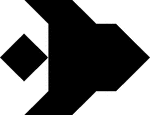
Hogfish
Tangrams, invented by the Chinese, are used to develop geometric thinking and spatial sense. Seven figures…
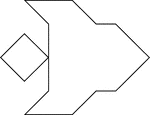
Hogfish
Tangrams, invented by the Chinese, are used to develop geometric thinking and spatial sense. Seven figures…
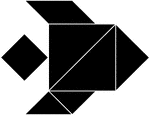
Hogfish
Tangrams, invented by the Chinese, are used to develop geometric thinking and spatial sense. Seven figures…
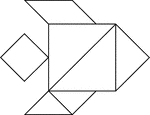
Hogfish
Tangrams, invented by the Chinese, are used to develop geometric thinking and spatial sense. Seven figures…
Segment, Horizontal Line
Illustration of a horizontal line segment. A line segment is a section of a line with definite endpoints.
Segment, Horizontal Line
Illustration of a horizontal line segment. A line segment is a section of a line with definite endpoints.
Segment, Horizontal Line
Illustration of a horizontal line segment. A line segment is a section of a line with definite endpoints.…
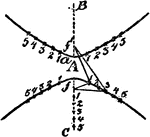
Construction Of A Hyperbola
An illustration showing how to construct a hyperbola by plotting. "Having given the transverse axis…
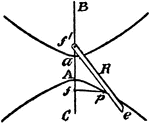
Construction Of A Hyperbola
An illustration showing how to construct a hyperbola by a pencil and a string. "Having given the transverse…

Ice Skater
Tangrams, invented by the Chinese, are used to develop geometric thinking and spatial sense. Seven figures…
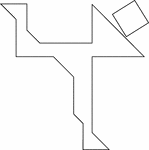
Ice Skater
Tangrams, invented by the Chinese, are used to develop geometric thinking and spatial sense. Seven figures…
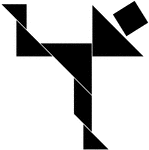
Ice Skater
Tangrams, invented by the Chinese, are used to develop geometric thinking and spatial sense. Seven figures…
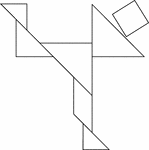
Ice Skater
Tangrams, invented by the Chinese, are used to develop geometric thinking and spatial sense. Seven figures…

Optical Illusions
Illustration showing optical illusions. It is not always possible to trust the eye to be sure if the…

Optical Illusions
Illustration showing optical illusions. It is not always possible to trust the eye to be sure if the…
Optical Illusions
Illustration showing optical illusions. It is not always possible to trust the eye to be sure if the…
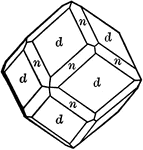

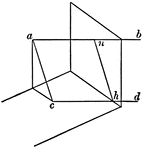
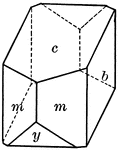
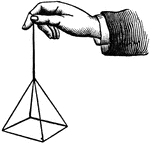
!["A polygon of...seven sides [is] a heptagon." —Hallock 1905](https://etc.usf.edu/clipart/36100/36137/heptagon_36137_mth.gif)
!["A polygon of...six sides a [is] a hexagon." —Hallock 1905](https://etc.usf.edu/clipart/36100/36136/hexagon_36136_mth.gif)
